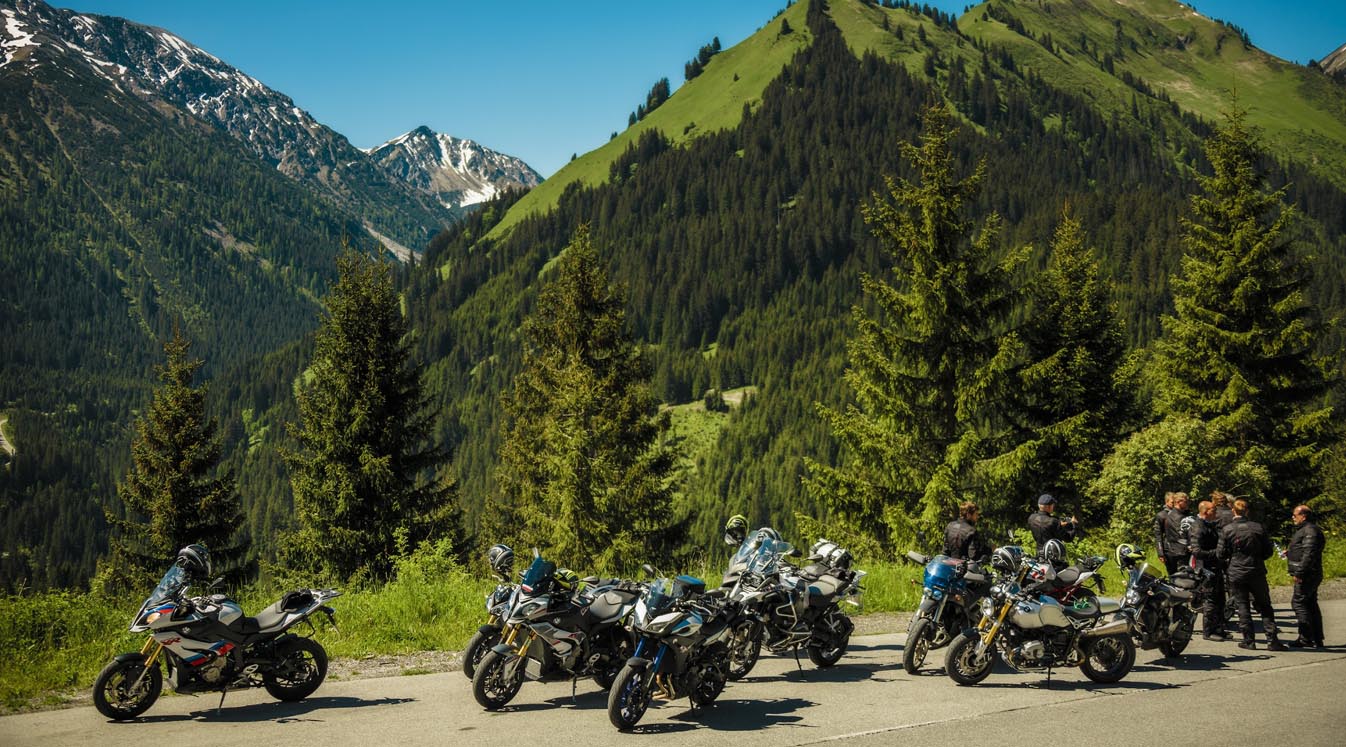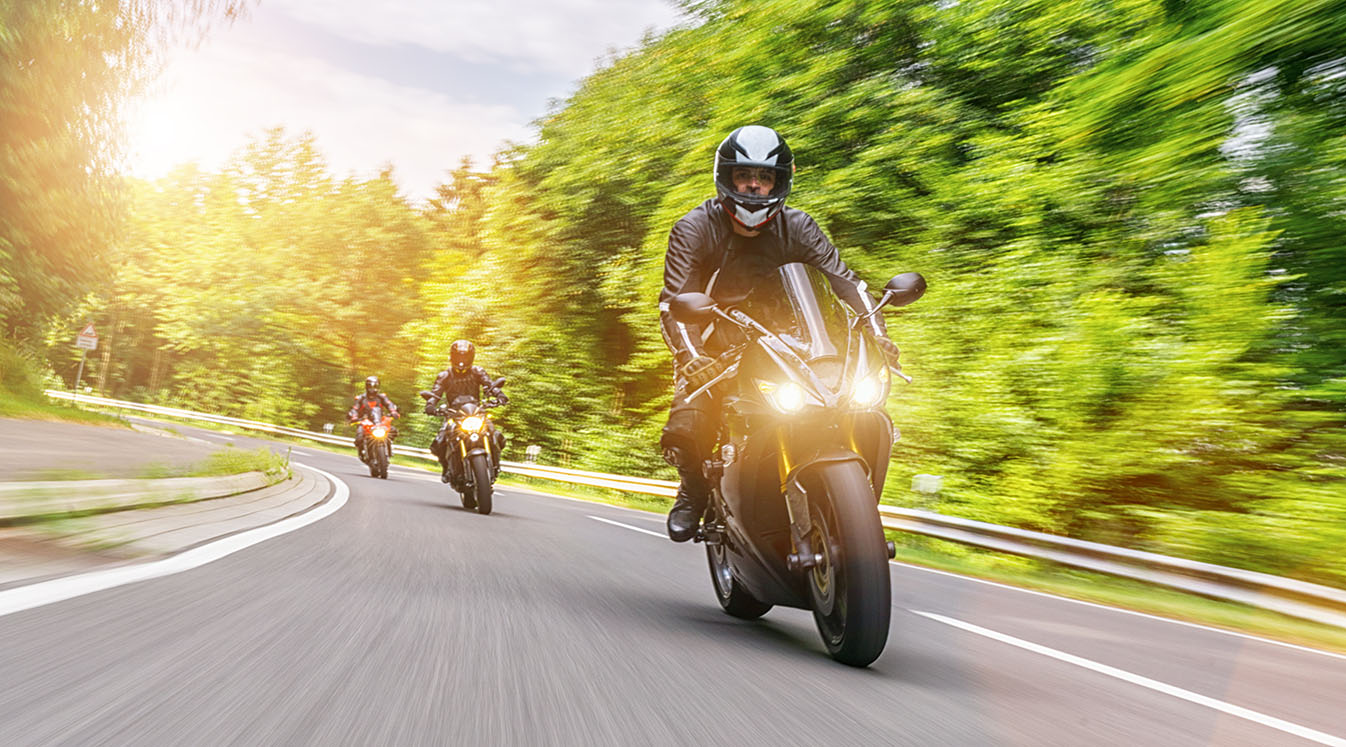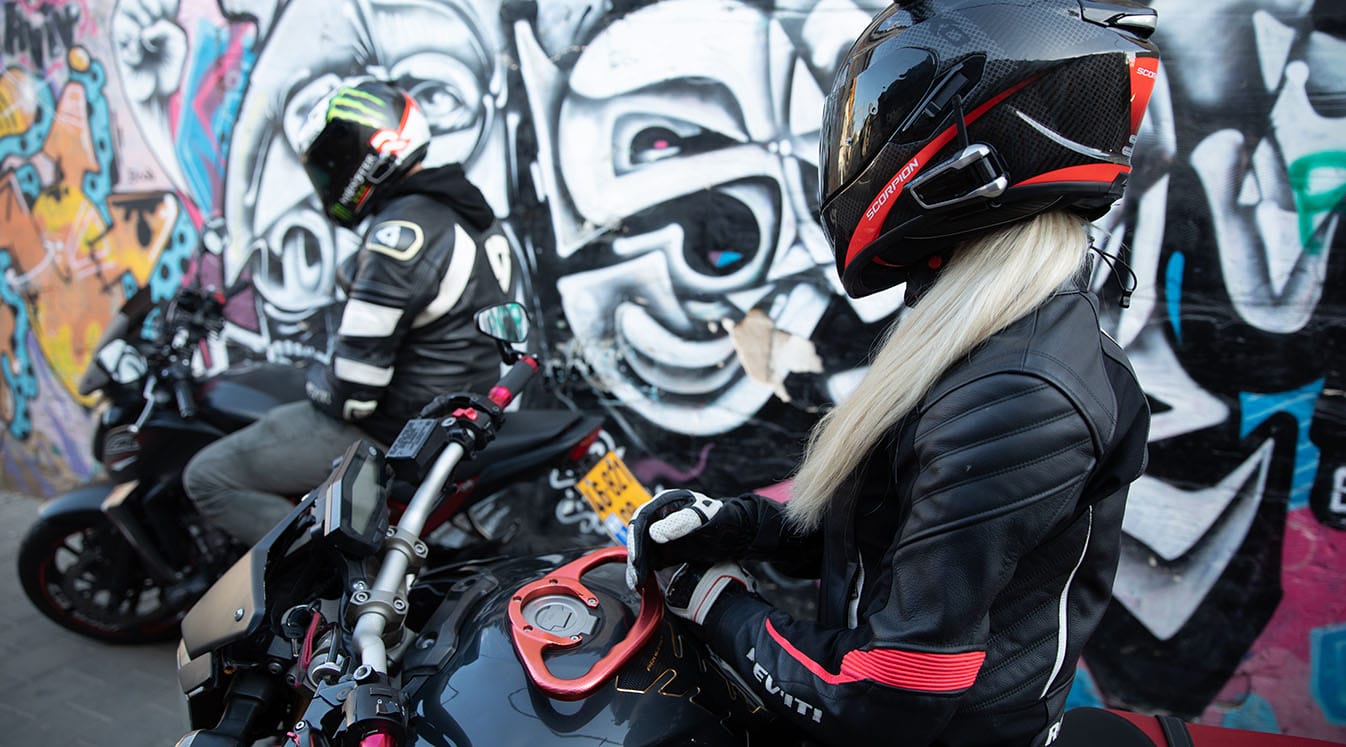There are a thousand different reasons why generations of motorcycle riders have considered the cross country trip to be a rite of passage. A cross country motorcycle trip is an incredible way to get a more intimate knowledge of your bike, your traveling companions, the landscape around you and even yourself. And, yes, when you’re out there on the road with your bike, you’re probably simply going to feel like a little bit of a badass, which is a pleasure in its own right.
The truth is, though, that the most successful cross country motorcycle trips are often also the best-planned ones. Planning doesn’t mean removing all spontaneity from your trip, but it does mean having a general idea of where you’re going, where you’re staying and other basics of any successful road trip. A little bit of effort put into planning will turn into a big payoff when it comes to enjoying your journey.
Overwhelmed by all of the factors of planning a cross country motorcycle trip? You’re not alone. Here are the essential questions that you need to answer to give your cross country trip a strong start.
Where Are You Going?
The first essential question you have to answer is what the endpoint of your journey will be. Having trouble choosing a destination? Here are some ideas that might get your motor running:
– A friend you haven’t visited in a long time
– A famous landmark you’ve always wanted to see
– A national or state park that you want to hike or camp
– One or more states you’ve never visited before
– A motorcycle rally or other event for riders

Any of these options make a perfect destination for a cross country motorcycle trip. When choosing your destination, however, be sure to think about whether your destination is realistic for a rider of your skill level. There’s nothing wrong with pushing yourself to a higher level, but if you’ve only been riding for six months, a coast-to-coast trek probably isn’t the ideal first long distance ride.
Talk to your other friends who ride motorcycles about rides that they’ve enjoyed and ask them whether your destination and timetable are realistic. Get some recommendations from them about the coolest places to go, because if they’re like most bikers, they’ve got a few recommendations that they’re dying to share.
International travelers have a unique set of things to think about, including passports, visas, currency and local cultures. See our guide to planning a motorcycle trip in Europe for advice on navigating popular destinations across the pond.
How Are You Getting There?
When you’re on a motorcycle, the quality and design of the roads are just as important as (if not more important than) where the roads go. Part of your plan of attack for your cross country tour should be deciding which roads you’ll take and researching what they’re like. Here are some of the big factors to think about:
– Whether you want your route to include tight, curvy sections that will test your riding skill
– Whether you want to explore famous motorcycling roads (such as the Three Sisters or Tail of the Dragon)
– Whether your bike can handle unpaved roads or needs good smooth pavement
– Whether you want to ride on major highways or smaller, more scenic backroads (or a mixture of both)
– Which roads will give you the scenic views you crave
– How quickly you want to arrive at your destination

Motorcycle trip planning apps and websites can help a lot here. Many apps, like Calimoto and Scenic Motorcycle Navigation, even allow you to select the level of road curviness you want on your journey. These apps also typically include user commentary that will help you identify rider-friendly roads with good scenery.
When Are You Going?
You’ll want to think carefully about the dates for your trip. If you’re headed to a particular event, like a wedding or family reunion, try to leave yourself at least an extra day in case something comes up. When considering how much time you need to take off work, don’t cut it so closely that you risk being late if you’re not exactly on schedule.
It’s especially important not to push yourself too hard if you’re relatively new to distance riding. Riding for long stretches can take a lot out of you, and you can put yourself in a dangerous situation if you push yourself to keep riding when you’re too tired and sore to concentrate. When in doubt, get off the road, and plan your trip so that you have time in your schedule to do it.
Most likely, your trip will fall within the typical riding season dates of (loosely) March through November. Remember that one month can feel really different from one region to another, particularly in the fall or spring. A ride that starts in a balmy Florida March can lead you into a snowstorm if your destination is Chicago. Pack the gear that makes sense for where you’re going and be prepared for conditions to change.

Who Are You Going with?
The pack you’re riding with can be a true make or break factor for a cross country motorcycle trip. Give careful consideration to who you want to bring along on your journey because you’re about to spend a lot of time with them.
Of course, there’s nothing wrong with going solo on your cross country trip. It can be an amazing and rewarding experience to face the roads alone with just you and your bike. However, you’ll need to take some extra steps to keep yourself safe, such as having a buddy who you check in with regularly at the end of your day’s travels.
If you are bringing friends, you want to ride with people you know and trust for a major undertaking like a cross country ride. Choose people who know your riding style and who are experienced, competent riders in their own right. Someone who’s relatively new to riding may struggle with the long days and physical exhaustion of cross country riding.
If you’re bringing a passenger who will be riding on your bike, it’s important that the two of you are already familiar with riding together. Every bike and every rider are different, and riding as a passenger is a skill of its own that has to be practiced.
Finally, make sure you have an easy way to communicate with the other people in your group. A motorcycle communication system like one of the Cardo Packtalk or Cardo Freecom helmet intercoms is an ideal choice. These devices keep your group locked in at all times through state-of-the-art wireless communication.
What Bike Are You Riding?
Most riders prefer to do long distance rides on cruisers, touring bikes or bikes that are otherwise designed for long haul riding. These bikes tend to have features that make distance riding easier, such as an upright riding position, forward-set footpegs and a comfortable seat. Touring bikes, in particular, are specially designed for the job – with features like built-in saddlebags.

While it’s certainly possible to do a cross country trip on a sportbike, you’ll need to do some preparation to make the experience comfortable and fun. Consider adding some mods like clip-on handlebars to take pressure off your wrists or a more padded seat to keep you comfortable. Pay careful attention to your packing list so that you don’t add too much weight to the bike, and use saddlebags or tank bags rather than a backpack.
It’s critically important that your bike gets an inspection and mechanical wellness check before any long trip. Take it to a trusted mechanic or do it yourself if you have the garage skills. And think carefully about taking a trip on that classic project bike that’s always breaking down. As romantic as an old-school bike might feel, it’s better to have a reliable bike that won’t leave you stranded when you need it the most.
What Are You Bringing?
Visit any motorcycle forum and you’ll find riders debating the ultimate kit for a cross country trek. However, there are a few key road trip essentials that just about everyone agrees on.
– Protective Gear: Helmet, boots, jacket, gloves — if you don’t have all of these motorcycle gear essentials already, it’s time to get your kit in shape. Your road trip gear should be designed for comfort and preferably already broken in. And don’t forget the rain gear in case you get stuck in a downpour.
– Saddlebags: Give careful consideration to the kind of saddlebags you pack your gear in. Hard cases are a great idea to give your stuff maximum protection from adverse weather. If you’re not used to riding with saddlebags, make sure to take a few test rides on your fully loaded bike, as it can significantly alter the bike’s balance and handling.
– Water and Snacks: Keeping your body nourished on the road is essential for a fun and safe road trip. Bring a rugged water bottle and some non-perishable snacks that will keep you sated during rest stops. Beef jerky and granola bars are classic options because they pack light and provide lots of energy and nutrients.
– Basic Tools: You need to be able to take care of basic repairs while you’re on the road. A multi-head screwdriver, flat kit and small ratchet set will take you a long way.
– Map: If you’re going through rural areas, your smartphone may not always have service when you need it. A satellite GPS can be an improvement, but the most reliable option of all in an emergency? A compact road atlas to slip into your bag.
– Helmet Communication System: A bluetooth motorcycle helmet speaker system like the Cardo Packtalk Bold will allow you to do everything from shooting the breeze with your fellow riders to jamming out with your favorite music. As previously mentioned, getting a good motorcycle communications system is especially important if you’re riding in a group.
– Ear Plugs: The constant noise of your engine and the wind together can be damaging to your hearing (not to mention annoying) when it’s going on for eight or more hours a day.
– Spare Key: For the relatively small cost of a duplicate, you can save yourself the embarrassment and anguish of having to have your motorcycle transported hundreds of miles back to your home base because you can’t find the key.

These aren’t the only pieces of gear you’ll need on the road, but they form a solid backbone for any road trip kit.
Where Are You Staying?
Riding a motorcycle cross country will leave your body ravenous for sleep at the end of the day, so it pays to do some advance consideration of where you’ll lay your head at night. Generally, you’ve got two types of options: camping or sleeping inside (whether at a hotel or with friends).
Motorcycle camping can be a lot of fun, and it’s particularly good if you’re planning to ride through scenic areas. If you’re planning on camping, make sure to check out our ultimate motorcycle camping gear checklist for more essentials that will make your wilderness experience a success.
However, keep in mind that your body may appreciate having a real bed to sleep in if you’ve just spent a long day riding. Springing for a hotel can make a big difference in how refreshed you feel when you wake up.
If you’ve got friends you can stay with for a night, even better! Just make sure that other members of your group have a place to stay lined up, and remember to make sure there’s a safe place to park your bike.

Your unforgettable motorcycle road trip experience is out there waiting for you — now, you just need to get the pieces in place to make it a success. And while you’re at it, check out some of the latest innovations in bluetooth motorcycle helmet technology so that you can stay connected throughout your cross country tour.





